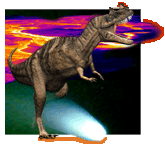Stratigraphy of the Cenomanian–Turonian Oceanic Anoxic Event OAE2 in shallow shelf sequences of NE Egypt
Type
Two shallow water late Cenomanian to early Turonian sequences of NE Egypt have been investigated to evaluate the response to OAE2. Age control based on calcareous nannoplankton, planktic foraminifera and ammonite biostratigraphies integrated with δ13C stratigraphy is relatively good despite low diversity and sporadic occurrences. Planktic and benthic foraminiferal faunas are characterized by dysoxic, brackish and mesotrophic conditions, as indicated by low species diversity, low oxygen and low salinity tolerant planktic and benthic species, along with oyster-rich limestone layers. In these subtidal to inner neritic environments the OAE2 δ13C excursion appears comparable and coeval to that of open marine environments. However, in contrast to open marine environments where anoxic conditions begin after the first δ13C peak and end at or near the Cenomanian–Turonian boundary, in shallow coastal environments anoxic conditions do not appear until the early Turonian. This delay in anoxia appears to be related to the sea-level transgression that reached its maximum in the early Turonian, as observed in shallow water sections from Egypt to Morocco. PDF

